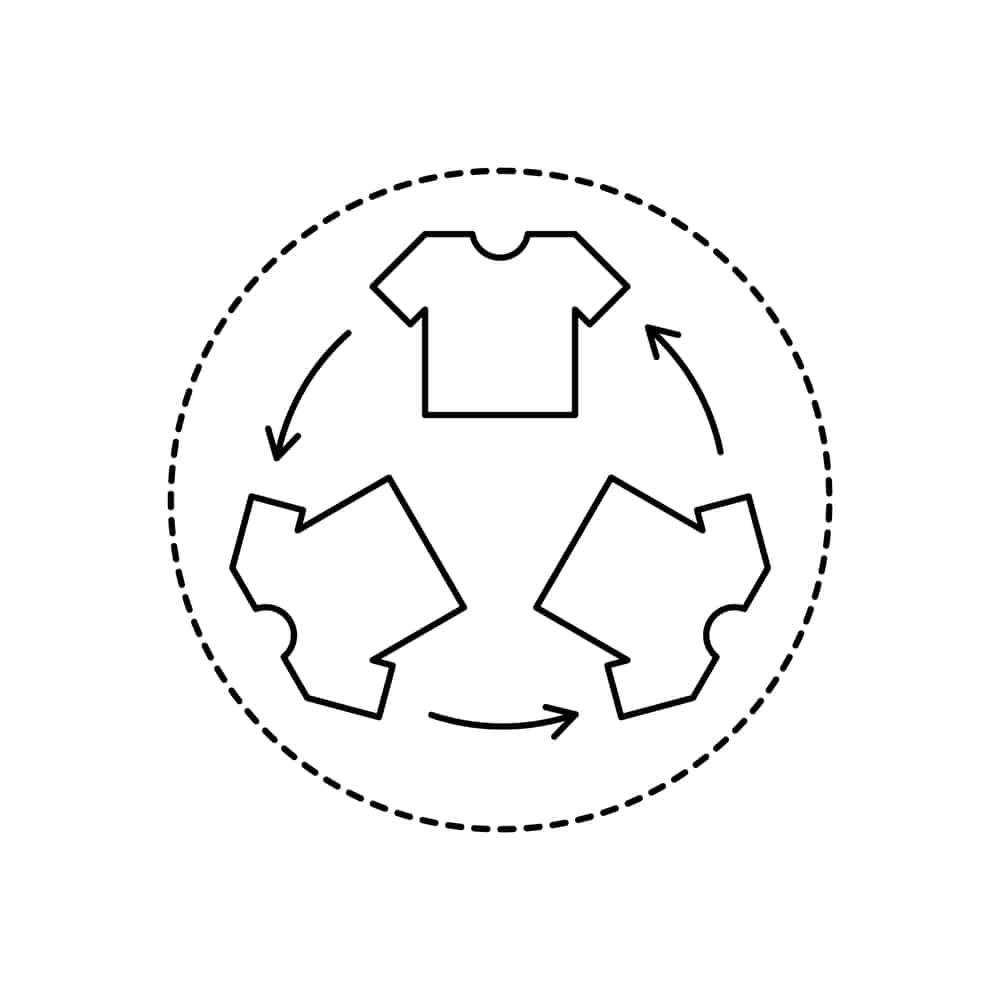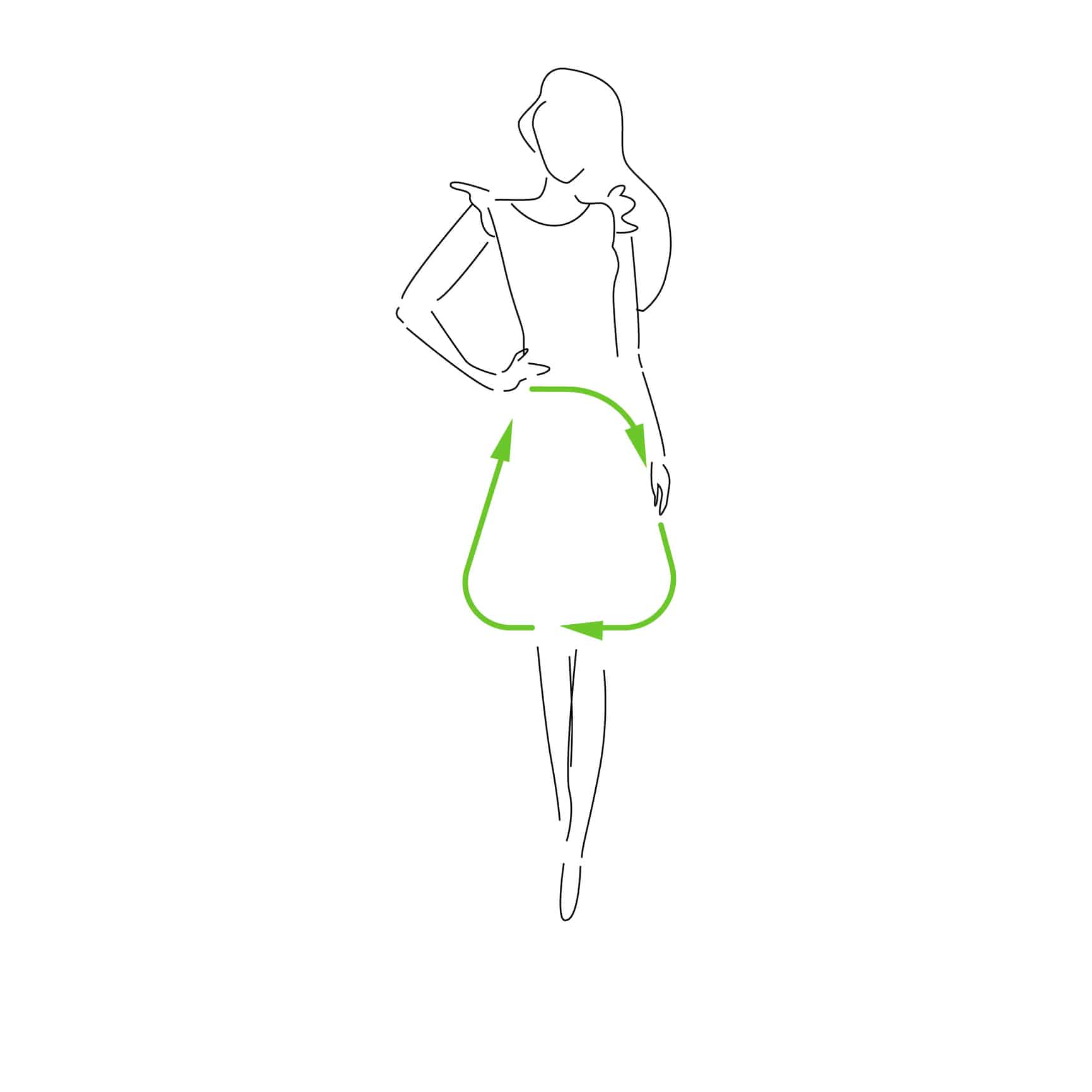Concept of Circularity in the Textile and Clothing supply chain
A supply chain is a network of operations and facilities that obtain raw materials, process them into intermediate items, and finally into finished products before delivering them to clients via a distribution system. The textile industry has a vast supply chain that is complicated and stretches across borders. Therefore implementing sustainable practices throughout the whole chain is a challenging task.
Suppliers, manufacturers, distributors, retailers, and end customers are all part of the textile supply chain. The most significant advantages for businesses with advanced supply chain management capabilities will be radically improved customer experience and responsiveness. It will help develop better customer services resulting in customer satisfaction, increased flexibility for changing market dynamics, higher customer retention, and more effective marketing.
Textiles and clothing involve a large number of production steps that are carried out by many consecutive industry units. The value-added chain is modelled alongside the material flow. It includes the phases of fibre production, yarn spinning, fabric weaving or knitting, dyeing and finishing, cutting and sewing, marketing, wholesale and retail, consumption, and disposal or recycling.

Major Challenges facing future generations
Non-Biodegradable Synthetic Fibres
Natural fibres include cotton, wool, bamboo, silk, and others found or grown naturally. In contrast, synthetic fibres are usually made up of chemical by-products of crude oil, which include polyester, nylon, acrylic, and multiple others. Nowadays, synthetic fibres dominate fibre manufacturing, with natural fibres and mixes of natural and synthetic fibres accounting for the rest. The rise of synthetics is causing environmental worry for a variety of reasons. Synthetic polymer manufacture is predicted to require 98 million tons of oil globally each year, which may be utilised directly as fibres, dyes, and finishes, making them reliant on fossil fuel extraction.
Synthetic fibres do not biodegrade. They may survive for decades in the environment. Furthermore, fibres are so tiny (micron size), they are more harmful than centimetre-scale polymers. For example, washing synthetic clothes releases nano and microfibers into rivers, causing irreparable damage to marine life and essential ecosystems and making it difficult to track down. When compared to natural fibres, the energy used and CO2 emissions produced by the production of synthetic fibres are significantly higher.
Untreated Effluent Discharge
The present clothing chain is wasteful and polluting. Fibre manufacturing, clothing creation, usage, and disposal all require massive amounts of water and leave residues of fibres and chemicals in water sources. Water consumption continues in the form of cleaning even during the various usage cycles.
According to the analysis, the apparel sector accounts for nearly 20% of worldwide water waste. Around 2,700 litres of water is required for one cotton T-shirt. Furthermore, textile dyeing or printing necessitates the use of harmful chemicals, which end up in our oceans. This excessive usage is immediately noticed in water-stressed areas.
A related study by the University of California, Santa Barbara discovered that washing polyester fleece coats releases 1.7 grammes of plastic microfibres. By 2050, the textile industry is expected to have emitted more than 20 million tons of plastic microfibres into the ocean
In short, the textile and clothing sector’s wasteful and polluting linear structured economy makes a strong case for sustainability and a circular economy. Industry practices like dampening and quick trash build-up can hurt the environment and harm human health by allowing micron-sized synthetic fibres to enter water streams. After reviewing the situation of the garment business, its operations, and its effects on environmental sustainability as a whole, it is becoming ever more critical to find a circular solution to this problem.
Fast Fashion – Fast Disposal
Fast fashion hastens the rate at which textile items enter the environment while also reducing the period for which things remain in use. According to a UN study, worldwide textile manufacturing more than doubled between 2000 and 2014. According to recent statistics, 62 million metric tons of clothes were consumed worldwide in 2019. Our society’s consumption has increased dramatically in recent years. Even though it’s good for our economy, a greater number of clothes end up in landfills. Since lesser quality garments wear out after only a few washes, creating a desire for more new clothes. Discarded clothing, such as that seen in Chile’s Atacama Desert, takes hundreds of years to biodegrade, damaging the environment and water.

Solution: Circularity for textiles
A circular economy is a new concept proposed with the phrases product reuse and recycling. A circular economy is a new economic, technical, social, and cultural ideology. A circular economy is a new regeneration method based on natural circular processes in which there is no waste but just matter movement. In nature, waste from one process becomes food or raw material for another. A circular economy considers what will happen to a product after its life cycle has ended, even before it is designed.
The clothing and textile sector needs to be transformed from the conventional linear economic model to a circular economic model. The change is desperately needed, considering the quickly changing global environmental conditions. A shift to a circular economy is predicted to provide environmental and social advantages and enormous commercial opportunities in the fashion sector by better harnessing the value of underused, landfilled, or burnt clothing.
A circular economy for textiles and clothing produces better products and services for consumers, supports a thriving industry, and revitalises the environment. It stresses the rights and equity of all people working in the textile and clothing industries and opens up new possibilities for dispersed, diversified, and inclusive growth. The European Union has published its Strategy for Sustainable and Circular Textiles, which sets out a vision and concrete actions to ensure that by 2030, textile products.
Encourage and develop long-term and recyclable designs.
Textile items may be made to survive for a long time by employing modular designs and high-quality fibres. Design development will make them easy to maintain. Also, designs that do not phase out very quickly from the trend create ‘timeless’ designs. Recyclability may be built in by choosing safe, easy-to-disassemble materials and focusing on homogeneous fibres rather than intricate mixtures. To promote this approach throughout the design stage, incentives and assistance are required.
Sustainable production of virgin natural fibres
Even with the massive recycling of textile products, the textile industry will be unable to recover 100% of product materials in future. Action should thus concentrate on developing more sustainable methods of producing virgin plant-based textiles like cotton.
Review the consumer’s buying behaviour
Compliance bodies and governments must reconsider the consumer buying pattern and devise strategies to slow down the pace of consumption. The plan must include buying less, buying second-hand, supporting sustainable fashion, and wearing clothing for extended periods.
Organise collection, grading, and recycling operations strategically
Collecting and grading worn or dumped textiles is time-consuming and labour-intensive, and recycling facilities are large-scale undertakings that require long-term investment. All must be precisely designed to ensure they are in the appropriate area and providing the necessary services.
Ensure that the market for recycled fibres remains competitive
The clothing and textile manufacturers will be able to use recycled fibres on a large scale only when recycled or regenerated fibres are cost-wise competitive in the market. Therefore there is an urgent need for Research and development in the recycling of fabrics and clothes to lower the costs associated with the recycling process.
All the above steps are some of the most important measures the regulatory bodies and compliance agencies need to take to make the clothing supply chains sustainable and circular. In this way, we could tackle the challenges we are facing today and make this world a better place for future generations.

